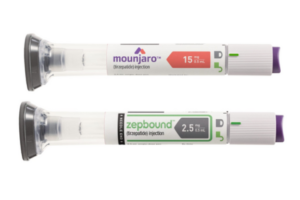The Importance of Indoor Air Quality
Indoor air quality is a critical aspect of any indoor environment, whether at home or in the workplace. The air we breathe indoors can have a significant impact on our health, productivity, and overall well-being. Poor indoor air quality can lead to a range of health issues, including respiratory problems, allergies, and fatigue, making it essential to prioritize proper ventilation and air circulation.Inadequate ventilation can result in the buildup of pollutants, allergens, and moisture in indoor spaces, leading to a host of potential health risks. By ensuring good indoor air quality through effective ventilation systems, we can create a healthier and more comfortable environment for occupants. Investing in quality ventilation solutions is not just about maintaining a pleasant atmosphere but also about safeguarding the health and vitality of those who inhabit the space.
Commercial Ventilation is essential for maintaining good indoor air quality. Proper ventilation systems can prevent the buildup of pollutants, allergens, and moisture, reducing health risks and creating a healthier environment. Investing in quality ventilation solutions is crucial for safeguarding the well-being of occupants.
Common Health Issues Caused by Poor Ventilation
Poor ventilation in indoor spaces can lead to a range of health issues for occupants. One common problem is the buildup of pollutants such as dust, allergens, and chemicals in the air. Without proper ventilation to circulate and exchange the air, these pollutants can reach levels that may trigger respiratory problems like asthma or allergies.Furthermore, inadequate ventilation can also create a breeding ground for mold and mildew, especially in damp or humid environments. Exposure to mold spores can cause respiratory irritation, exacerbate allergies, and in some cases, lead to more serious health concerns. Improved ventilation is crucial in reducing the conditions that encourage mold growth and safeguarding indoor air quality for the well-being of occupants.
Benefits of Proper Ventilation in the Workplace
Proper ventilation in the workplace plays a crucial role in maintaining a healthy and productive environment for employees. By ensuring adequate airflow and ventilation throughout the workspace, businesses can significantly reduce the risk of indoor air pollutants building up and causing potential health issues. Improved ventilation not only helps in minimizing the spread of airborne contaminants but also assists in regulating the temperature and humidity levels, creating a more comfortable setting for staff to work in.In addition to enhancing employee health and well-being, proper ventilation in the workplace can lead to increased productivity and efficiency. Fresh, clean air can help employees feel more alert, focused, and energized, ultimately contributing to a more positive work atmosphere. Furthermore, a well-ventilated workspace can help reduce the likelihood of odors lingering and prevent the accumulation of mold and mildew, promoting a clean and pleasant environment for everyone.
Key Factors to Consider for Improved Ventilation
When aiming to enhance ventilation within a workplace or residential setting, several key factors play a pivotal role. Firstly, evaluating the existing ventilation system’s capacity and efficiency is fundamental. This assessment ensures that the system can adequately circulate fresh air while removing pollutants and maintaining optimal indoor air quality. Additionally, considering the layout and size of the space is vital to determine the appropriate ventilation solutions needed for effective air distribution.Moreover, the selection of suitable ventilation equipment is crucial for achieving improved indoor air quality. Choosing ventilation systems tailored to the specific needs of the environment, such as air purifiers or energy recovery ventilators, can significantly enhance air circulation and filtration. Proper maintenance of these systems, including regular filter replacements and cleaning, is equally essential to ensure their optimal functioning in promoting a healthy indoor atmosphere.
Signs of Poor Indoor Air Quality
Common signs of poor indoor air quality include persistent odors that linger despite efforts to eliminate them. These odors can range from musty and stale to chemical-like, indicating a potential buildup of harmful substances within the indoor environment. Additionally, visible mold growth on surfaces or a heightened presence of dust particles in the air may suggest inadequate ventilation and circulation.Another indicator of poor indoor air quality is an increase in allergy or respiratory symptoms among occupants. This can manifest as frequent coughing, sneezing, watery eyes, or exacerbation of existing conditions such as asthma. If individuals consistently experience these symptoms within a particular indoor space and notice relief upon leaving, it is important to investigate and address potential air quality issues promptly.
Natural Home Solutions offer effective remedies for poor indoor air quality. Persistent odors, mold growth, and increased allergy symptoms indicate potential air quality issues. Prompt investigation and action are crucial to creating a healthier indoor environment for all occupants.
Tips for Enhancing Ventilation in the Workplace
To improve ventilation in the workplace, consider utilizing natural ventilation methods such as opening windows and doors strategically to allow for cross ventilation. This can help maintain fresh airflow, reduce stagnant air, and decrease the build-up of pollutants indoors. Additionally, installing air purifying plants can enhance indoor air quality by absorbing harmful toxins and releasing oxygen, contributing to a healthier work environment for employees.Another tip for enhancing ventilation in the workplace is to regularly clean and maintain HVAC systems to ensure optimal performance. Dust, debris, and mold accumulation in these systems can compromise air quality and circulation. By scheduling routine professional inspections and cleanings, you can prevent issues that may hinder ventilation and promote a more comfortable and productive workspace for all.
The Role of HVAC Systems in Employee Health
HVAC systems play a critical role in the overall health and well-being of employees in a workplace setting. By efficiently controlling temperature, humidity levels, and air circulation, HVAC systems help in creating a comfortable and healthy indoor environment. Properly functioning HVAC systems can reduce the risk of respiratory issues, allergies, and other health concerns that may arise from poor indoor air quality.Furthermore, HVAC systems contribute to better employee productivity and satisfaction by maintaining optimal indoor conditions throughout the year. Employees are likely to feel more motivated and focused in a well-ventilated workspace, resulting in improved work performance. Regular maintenance and servicing of HVAC systems are essential to ensure they operate at peak efficiency, promoting a healthy work environment for all occupants.
Best Practices for Maintaining a Healthy Indoor Environment
To maintain a healthy indoor environment, regular HVAC system maintenance is essential. Filters should be replaced according to manufacturer recommendations to ensure optimal air quality. Additionally, air ducts should be inspected and cleaned to prevent the buildup of dust, mold, and other contaminants that can circulate through the indoor air.Incorporating plants into indoor spaces can also promote better air quality. Plants naturally filter out toxins and increase oxygen levels, creating a fresher and healthier indoor environment. Choosing low-maintenance plants such as spider plants, peace lilies, or snake plants can not only enhance the aesthetics of the space but also contribute to better air quality.
Case Studies Demonstrating the Impact of Better Ventilation
Natural Home Solutions, a company specializing in skylight and ventilation installations, conducted a case study to showcase the impact of improved ventilation on indoor air quality. By implementing a combination of skylights and advanced ventilation systems in a residential setting, the company observed a significant decrease in airborne pollutants and humidity levels, resulting in a fresher and healthier living environment for the occupants. The natural airflow facilitated by the strategic placement of skylights not only enhanced the overall comfort of the space but also reduced the reliance on artificial cooling systems, leading to energy savings for the homeowners.In another case study conducted by Natural Home Solutions in a commercial office building, the introduction of a custom-designed ventilation system demonstrated a notable improvement in employee productivity and well-being. By optimizing the airflow and air exchange rate within the workspace, the company observed reduced instances of employee absenteeism due to respiratory issues and reported higher employee satisfaction levels. The enhanced ventilation system not only created a more comfortable and inviting work environment but also contributed to a boost in overall morale and a decrease in employee complaints related to indoor air quality concerns.
Resources for Implementing Ventilation Improvements
For businesses seeking to enhance their indoor air quality through improved ventilation systems, accessing reliable resources is crucial. Various industry-specific organizations offer guidelines, webinars, and tools to assist in implementing effective ventilation solutions. These resources often include best practices, case studies, and expert advice tailored to different workplace settings, supporting informed decision-making and successful outcomes.In addition to industry-specific resources, working with specialized vendors and consultants can provide valuable insights and expertise in designing and implementing ventilation improvements. Companies like Natural Home Solutions, with their extensive experience in skylight and ventilation installations, offer personalized consultations, innovative solutions, and reliable support throughout the implementation process. Collaborating with such experts can streamline the transition to a healthier indoor environment and maximize the benefits of enhanced ventilation for both employees and the business as a whole.














